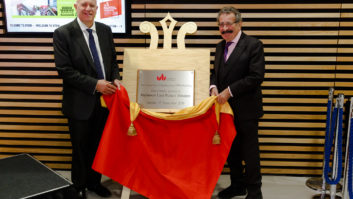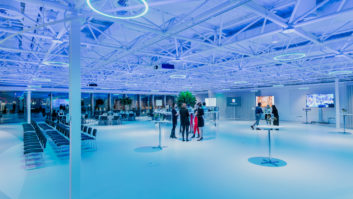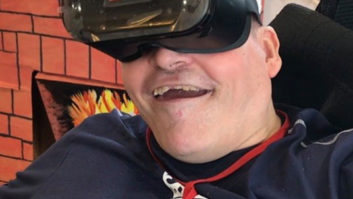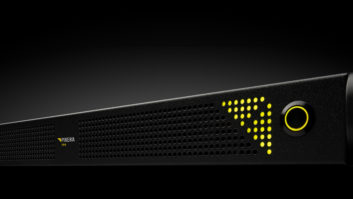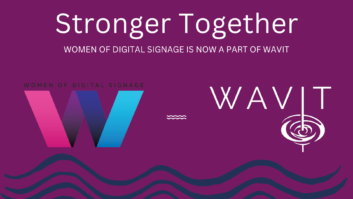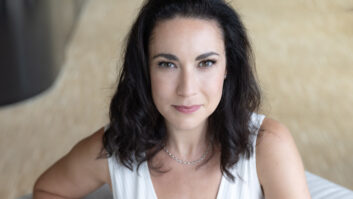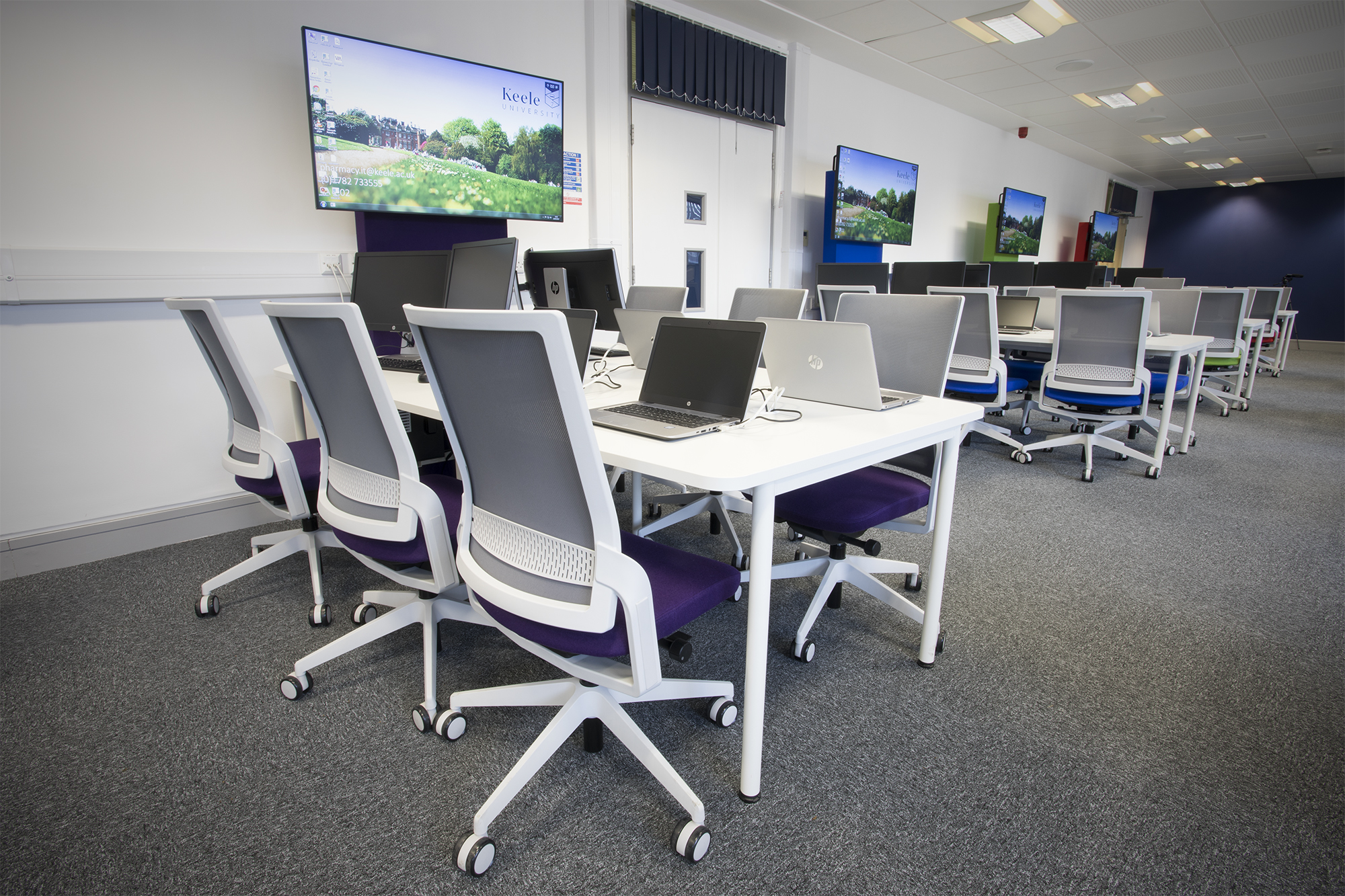
Pure AV has worked with the School of Pharmacy at The University of Keele to transform a traditional 48 seat IT lab into a modern 60 seat collaborative space.
The redesigned ‘Digital Health Hub’ combines a new classroom layout with wireless collaborative casting tools to increase room capacity, encourage collaboration and enable greater interaction with the augmented reality teaching tools developed and used within the School of Pharmacy.
Reg Icli, learning technology office at the School of Pharmacy explained: “The new teaching space was designed with collaborative learning in mind, along with features that would accommodate the School of Pharmacy’s latest augmented reality teaching tools and facilitate the School of Health and Rehabilitation’s Radiography course.”
The University needed to increase the capacity of the room while reducing the overall footprint. This required a fresh approach to the room layout and was made possible through the introduction of new collaborative furniture.
The original banks of desks and computers have been replaced with 10 tables, each with a 49in display situated at one end and equipped with either laptop or desktop workstations. The tables are colour coded to assist with group activity, and each can comfortably accommodate six students.
The lecturer has the ability to distribute content to each of the displays through the Extron control panel situated on the lectern, and a Kramer Via Connect Pro system introduces the potential for wireless collaborative casting.
The solution created by Pure AV offers the flexibility to adapt to the differing requirements of room users. The ability to share content wirelessly over the University’s Eduroam network using the Kramer Via Connect Pro system has increased the adaptability of the space and the potential for lecturers to introduce new, creative teaching methods.
As Katie Maddock, MPharm course director explained: “We wanted to design something that was very flexible. That flexibility will allow us to do all sorts of creative things. We’ve got our own augmented reality technology that we can project out to the students, or we can set up small group creative projects within the larger group teaching, it’s going to be tremendous.”
With the ability to simultaneously share up to four screens (desktop, laptop or mobile device) to the 10 49in LCD displays in the room. Students can collaborate using these displays and their own devices in a number of ways: making notes, utilising digital whiteboards, sharing files and even taking turns controlling linked displays to present to the whole room.
Perhaps the biggest impact on the environment is the inclusion of the wireless casting, as Reg Icli explained: “The wireless casting is a fantastic addition to the space and has helped us to change the way we teach, particularly through the use of AR tools which can be managed locally in a very effective and simple way.”
Katie Maddock added: “I think the student experience in this room is going to be absolutely amazing. The ability for them to use their own technology to find their own information and then share that information freely within the group is probably going to be the biggest thing. Also being able to project our own high-tech augmented reality tools so that each student group can do something different with it, is going to be tremendous.”
The project was successfully delivered within a six-week period, and the University eagerly anticipates the full integration of the room into the programme for the new academic year. Work has already begun developing the AR technology to make the most of the new space, and we look forward to seeing the results.
